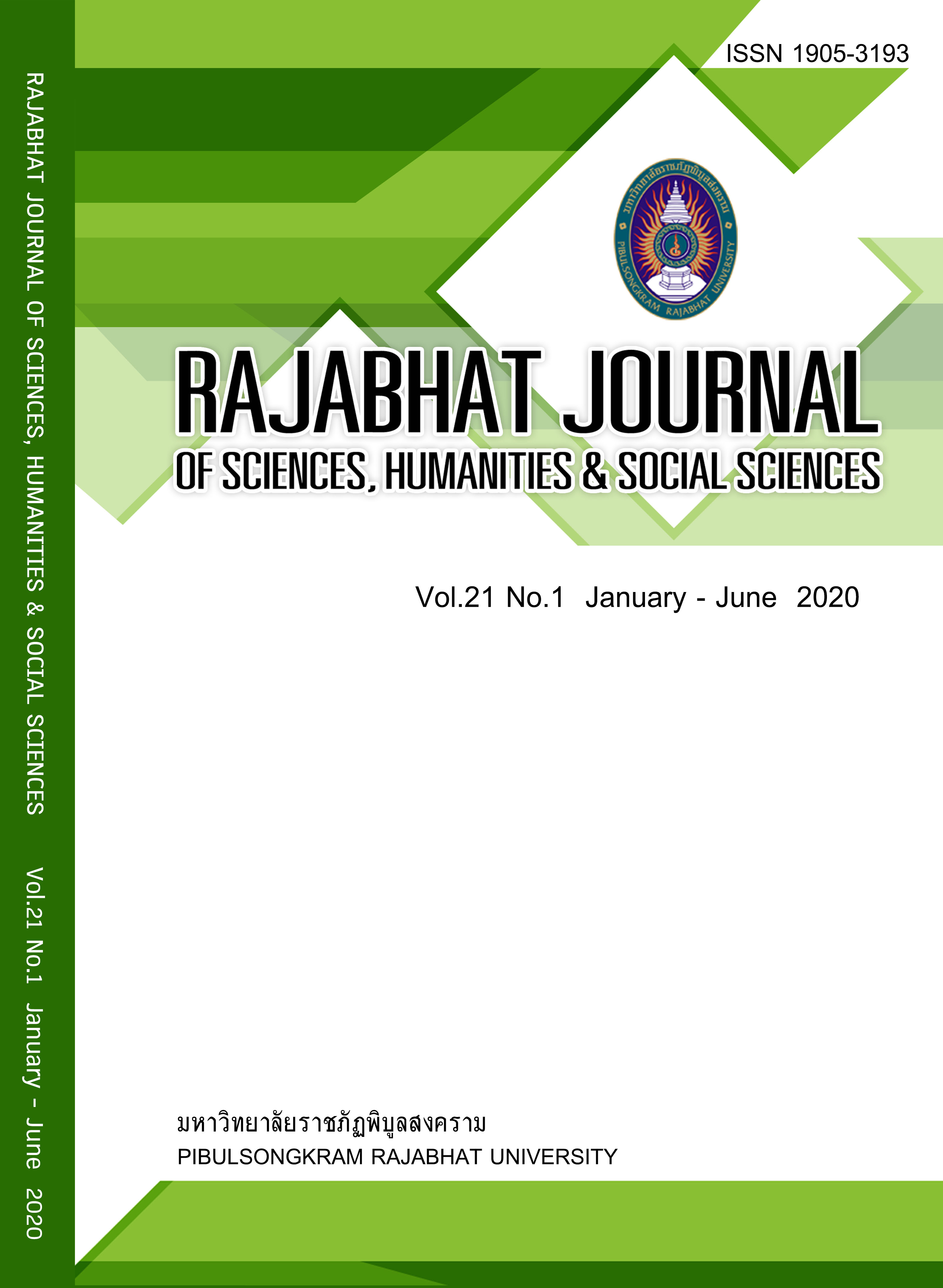QUANTITY BAMBOO PRODUCTION ON DEMAND OF BAMBOO PRODUCTION’ OTOP IN PRACHINBURI PROVINCE
Keywords:
Bamboo, Production volume, Requirements, ProductsAbstract
Importing of bamboos for domestic use causes some deficits. Therefore, this study compared the plantation and demand of bamboos for OTOP producers in Prachinburi Province, which is one the most bamboo plantation provinces. The questionnaires were used. It was found that 44 household’s bamboo plantations in Mueang Prachin Buri, Prachantakham and Na Di produced bamboo culms at the average of 43,636 culms per household per year, for sale in both Prachinburi and other provinces. Seven species from four families were found. These included Dendrocalamus asper (J.H.Schultes) Backer ex K.Heyne (64.10%), Bambusa vulgaris Schrader ex Wendland (20.51%) which can be used for both planting for clumb and shoots, ×Thyrsocalamus liang Sungkaew & W. L. Goh (10.26%), Bambusa longispiculata Gamble ex Brandis, Thyrsostachys siamensis Gamble and Bambusa bambos (L.) Voss (5.13%). Most of the bamboos were used for processing of bamboo products. From the survey of 12 OTOP producers, the demand for bamboo culms was found to be 3,710 culms per year. Most OTOP producers planted their own bamboos. There was a demand for bamboos especially OTOP producers with limited access to land use. All the OTOP producers experienced the lack of bamboo culms during rainy season due to the use of bamboo shoots for consumption. The survey found that 33.33% of OTOP producers purchased the bamboo culms from other provinces. Hence, the demand for bamboo culms in Prachinburi is more than the supply. There should be the increase of bamboo plantations to serve the demand, providing more income for farmers.
References
Asia Pacific Forestry Community Training Center, 2014, Bamboo and Thai way of life: knowledge and local management, Asia Pacific Community Forestry Training Center, Bangkok, 154 p. (In Thai)
Chitchak c., Mokkhunthot S., Sinthutao C., et al., n.d., Study on Chemical Properties of Bamboo, Department of Forestry, Bangkok. 34 p. (In Thai)
Chiwapreecha B., Kongpakdee C. and Chanprasert K., 2014, Research on Diversity, Characteristics and Some Properties Aspects of bamboo in Sa Kaeo and Prachinburi provinces, Burapha University, 61 p. (In Thai)
Phuangchik P., 2015, Activated carbon from bamboo: High market on demand? J.Science and Technology, 23 (6) (Special): 945-954. (In Thai)
Phuangchik T., 2013, Is Bamboo Amazing Plant ? J.Science and Technology, 21(2): 180-185. (In Thai)
Phuangchik T., 2014, Bamboo: Energy crops of the future? J.Science and Technology, 22 (1): 130-136. (In Thai)
Phuangchik T. and Harakote P., 2018, Survey, Collection and Characteristics of Natural Bamboo in Kanchanaburi, Thailand, J.Science and Technology, 7: 382-392. (In Thai)
Soiytongkum P., 2013, Sustainable Management of Bamboo, In Buajongkol P. (editor), Bamboo (page 4). Bangkok. (In Thai)
Suwajitantanon S, 2008, Bamboo Collection Garden, Available Source: https://www.ku.ac.th/e-magazine/dec51/agri/agri2.htm, August 8, 2019. (In Thai)
Visaratana T., Boonyuan S., Petmark P., et al., 1993, Dendrocalamus asper Backer. And Bambusa Nana Roxb. Planted In Agroforestry System, Thai J. For, 12 : 77-83.(In Thai)
Downloads
Published
How to Cite
Issue
Section
License
Each article is copyrighted © by its author(s) and is published under license from the author(s).










